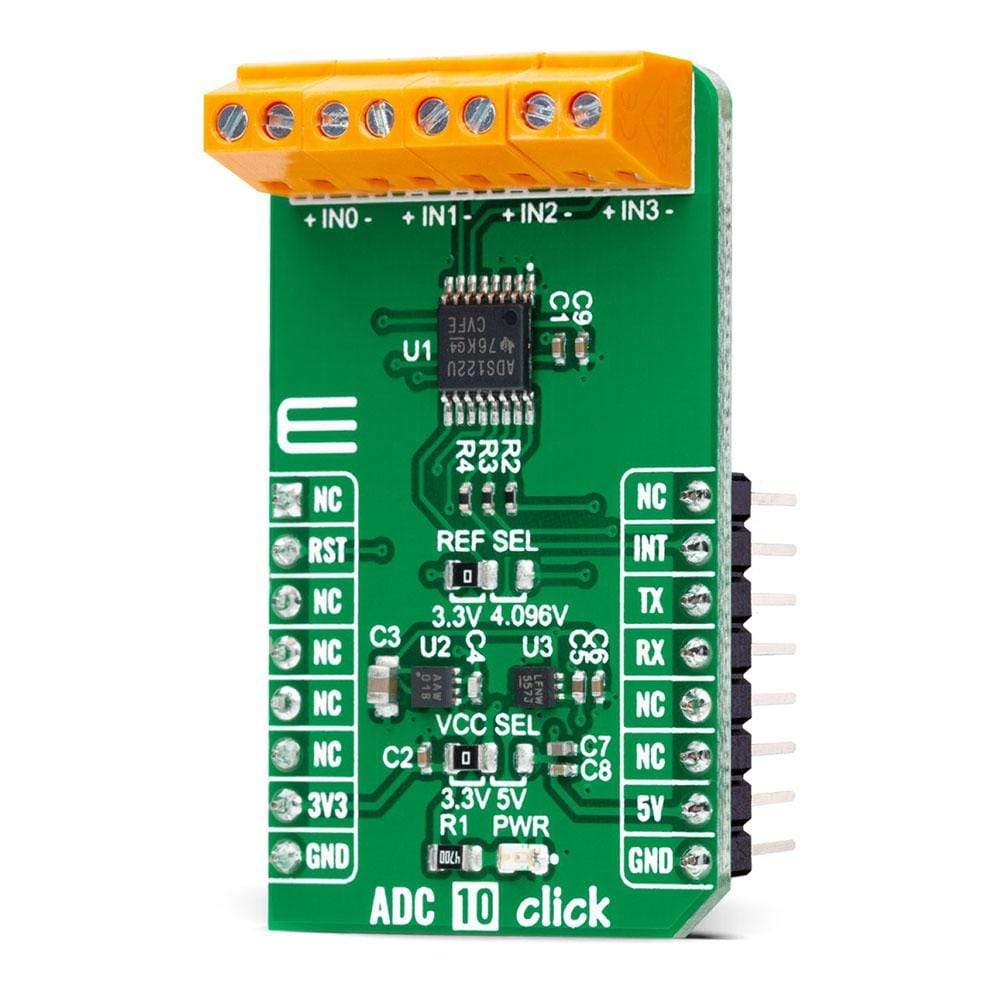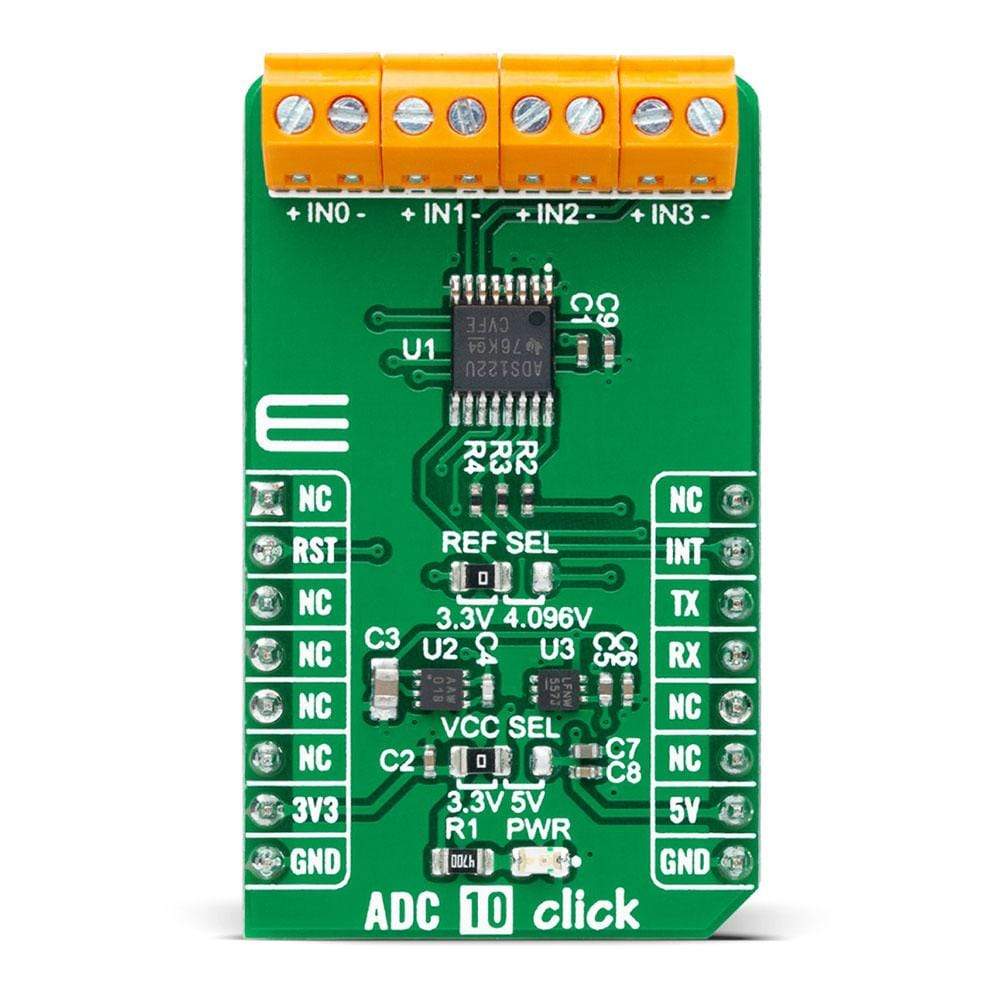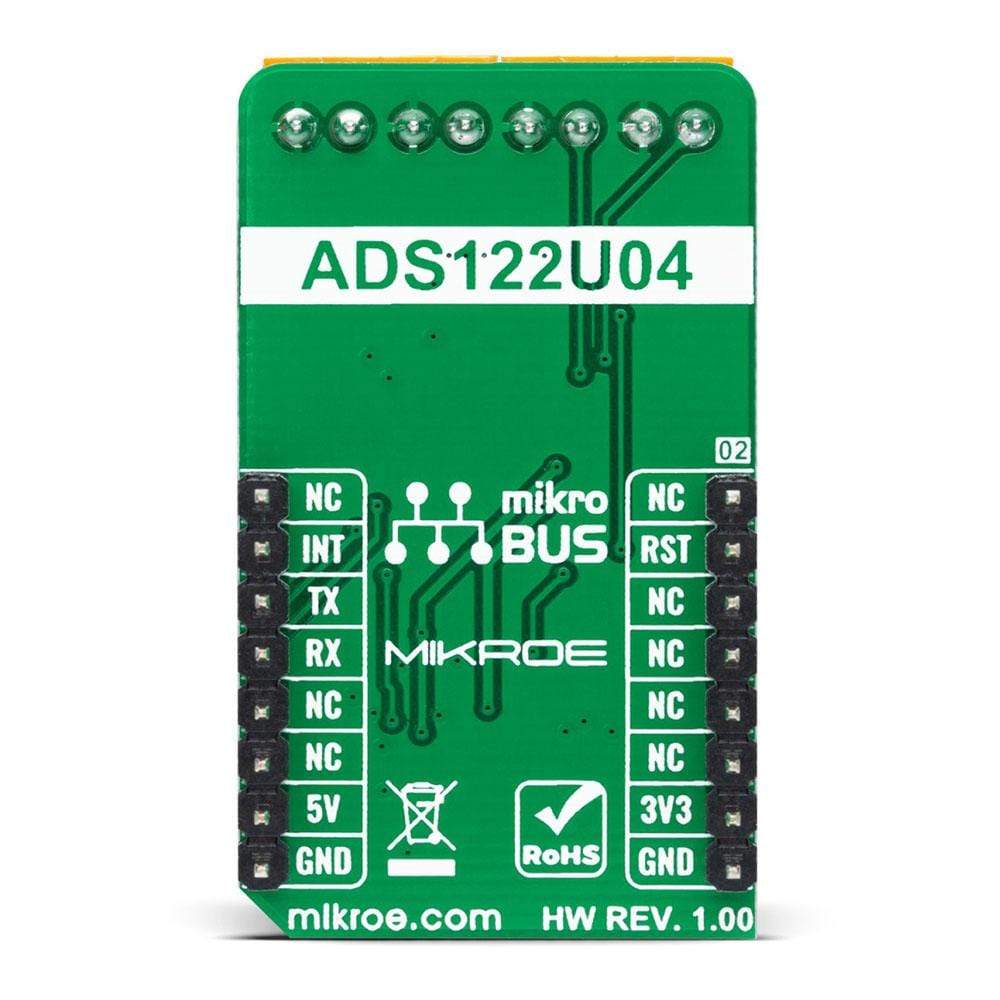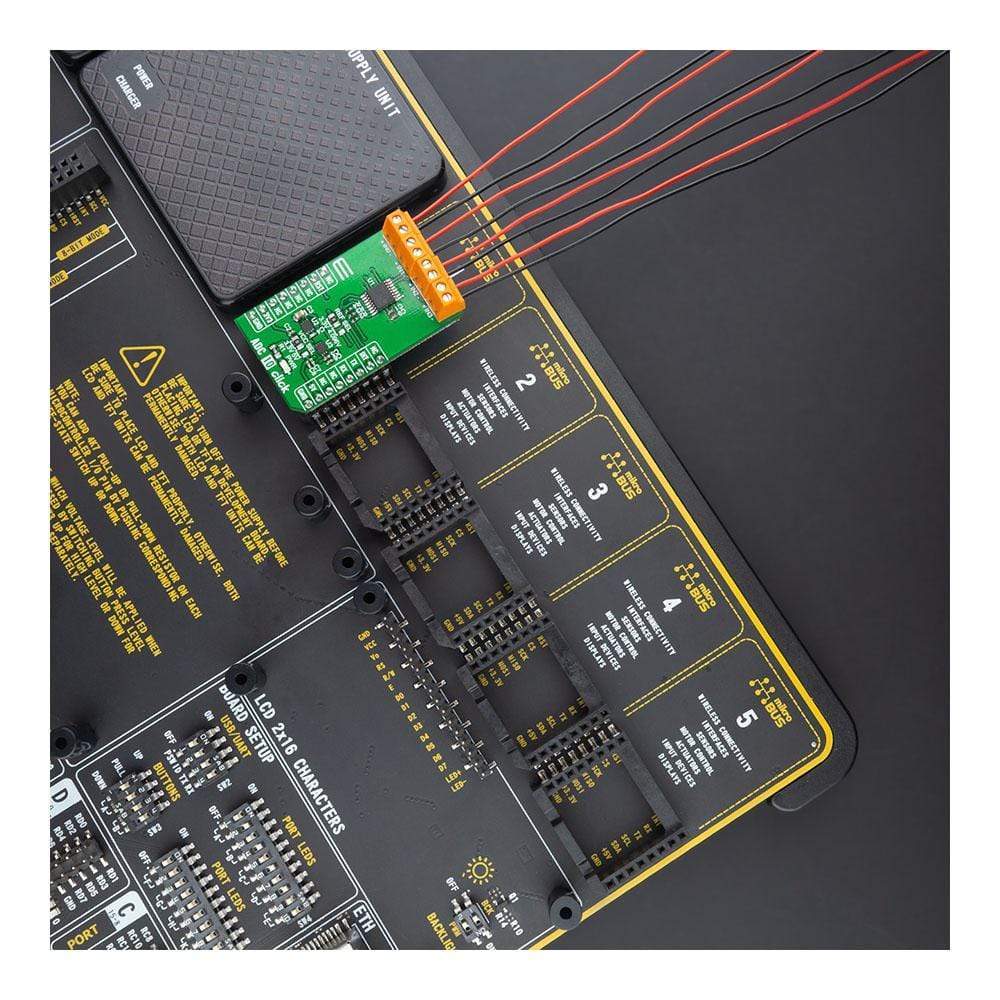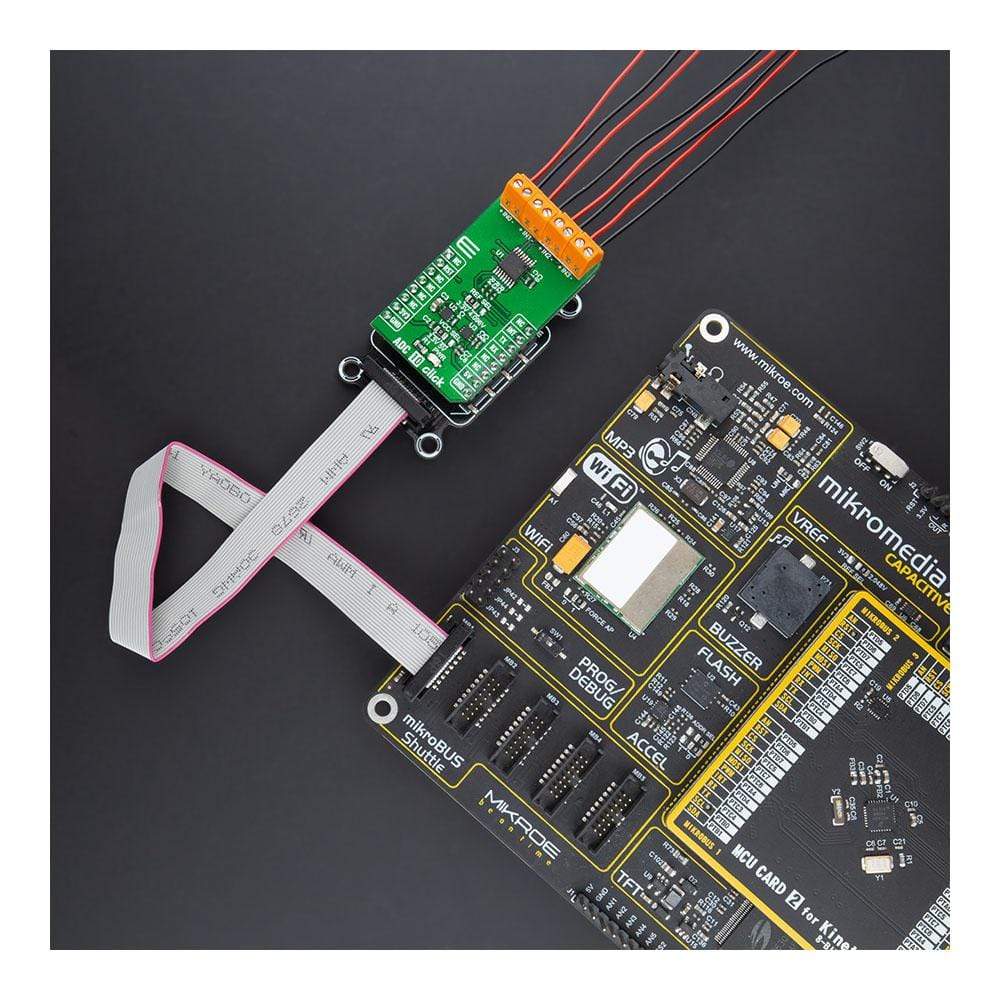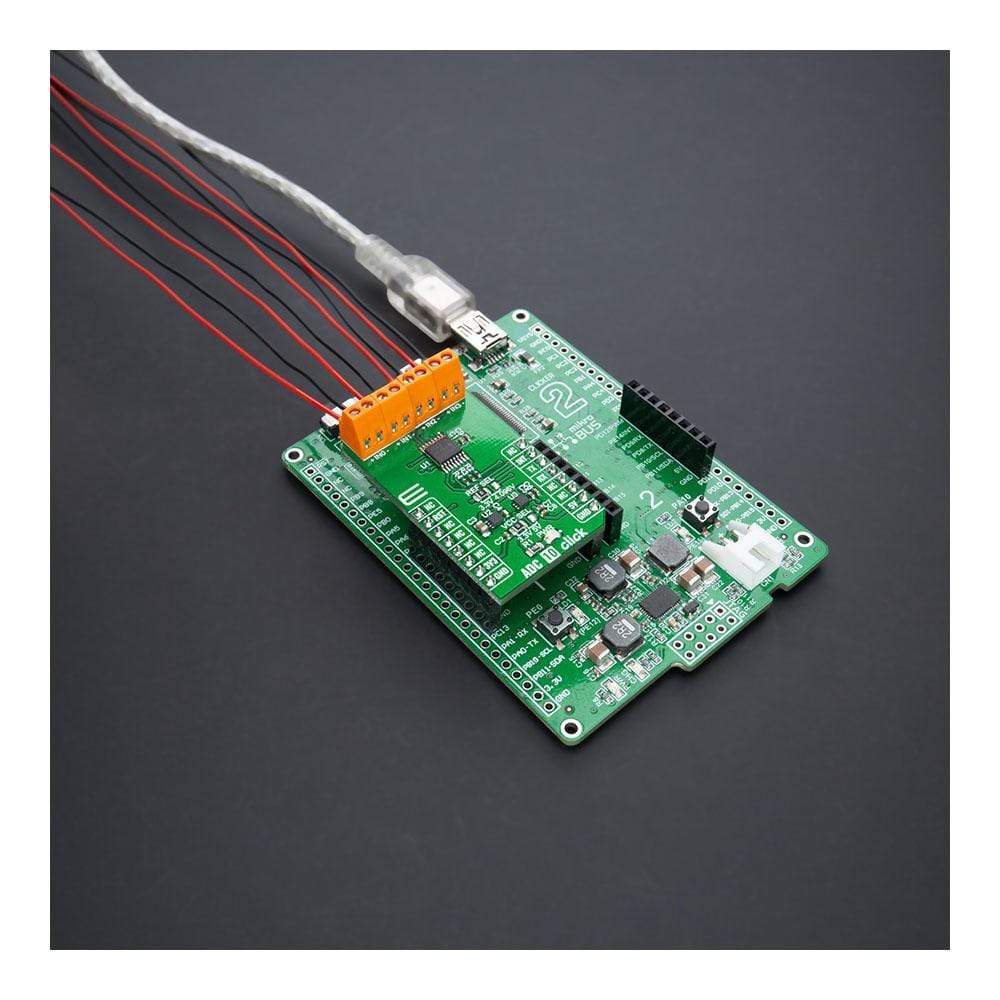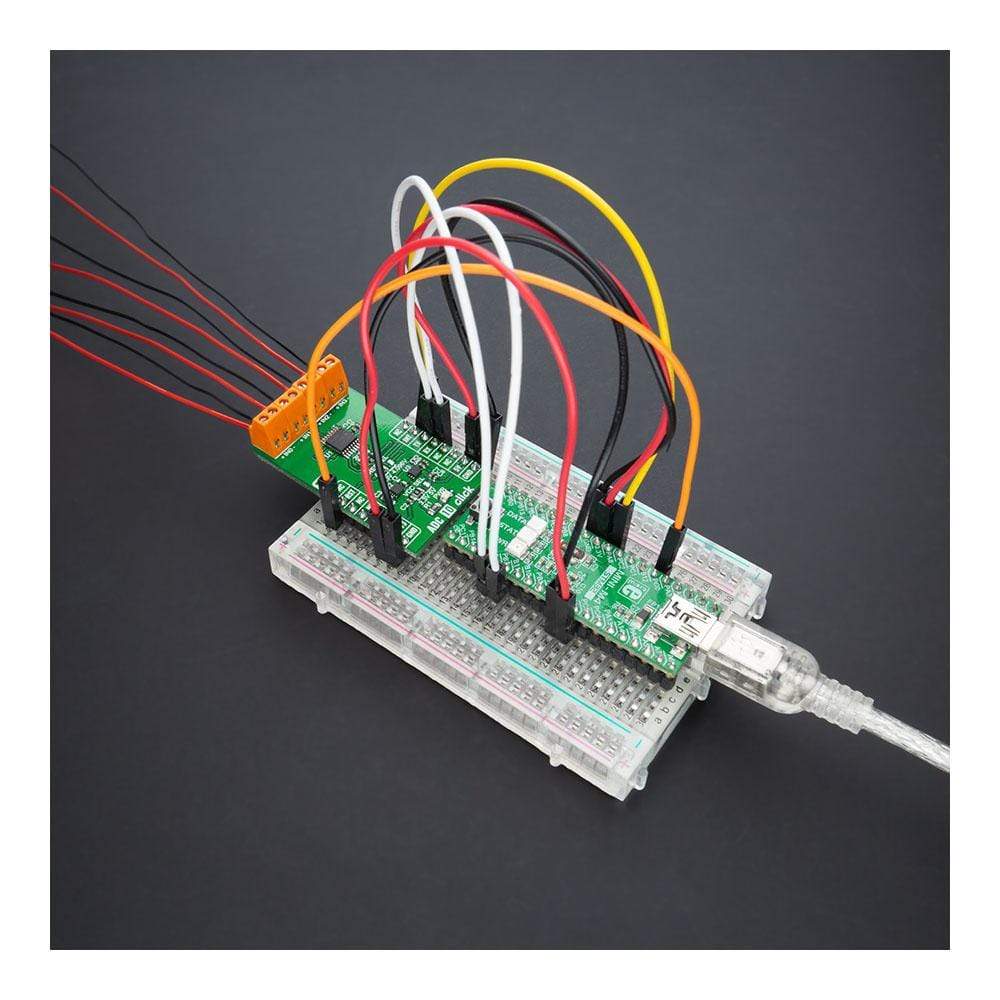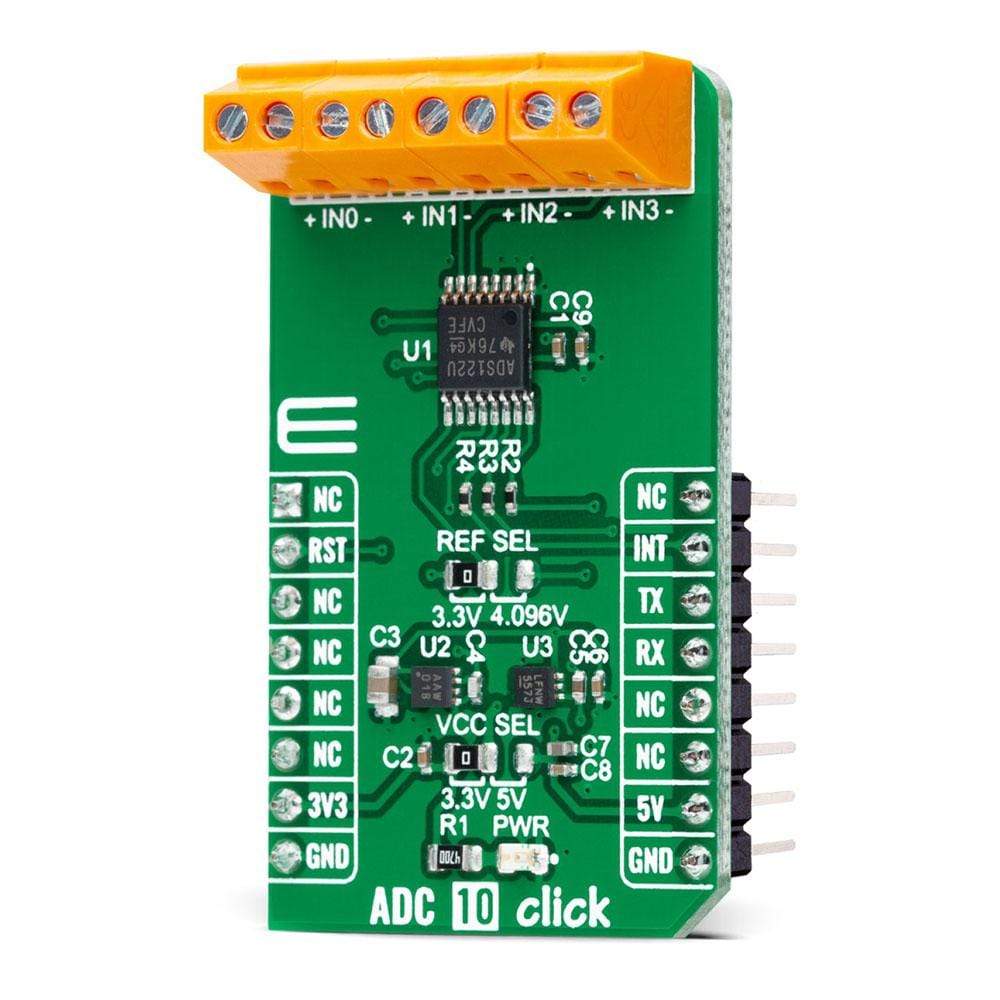
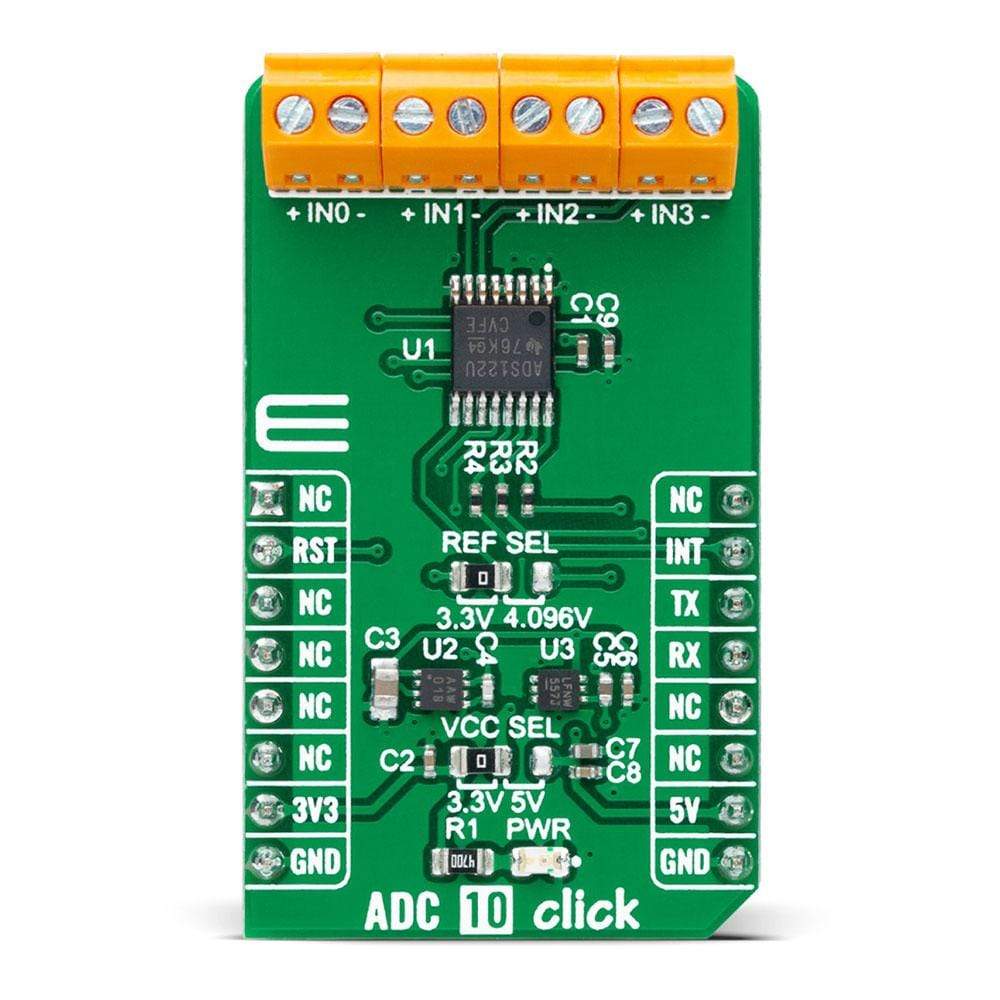
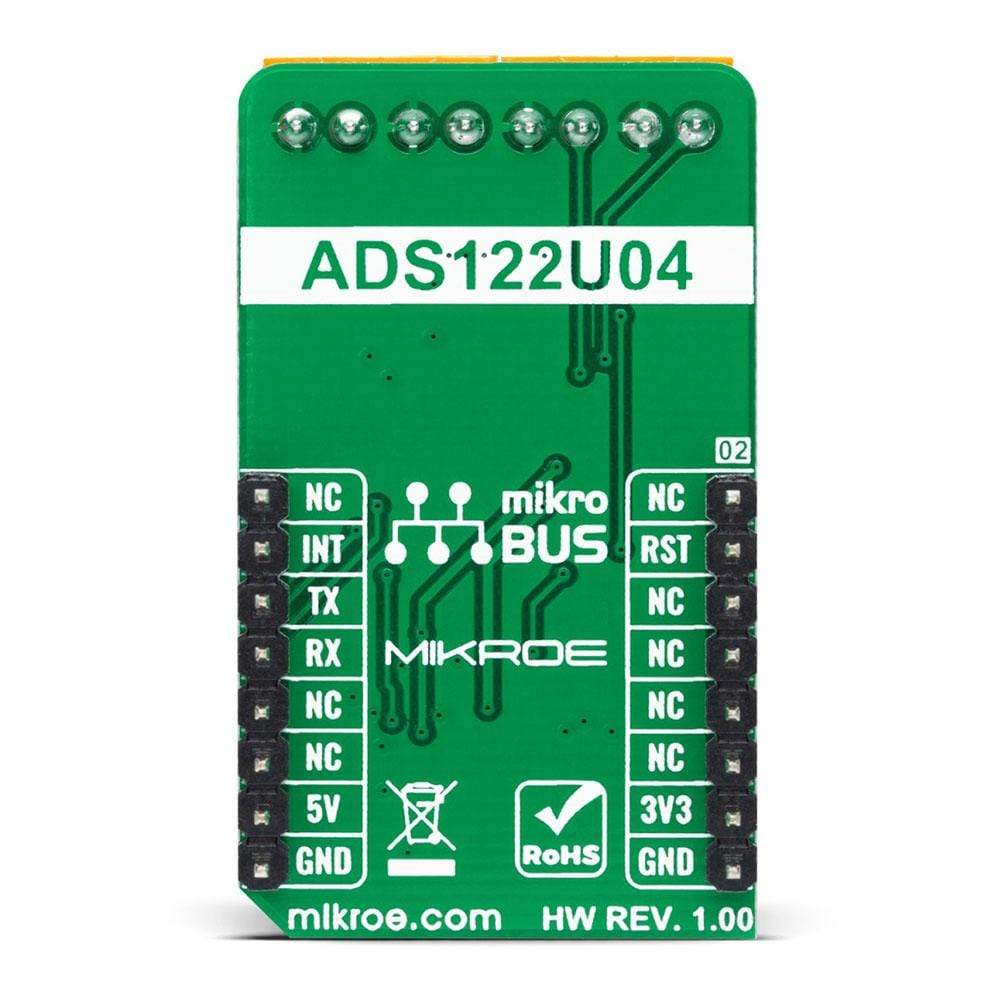
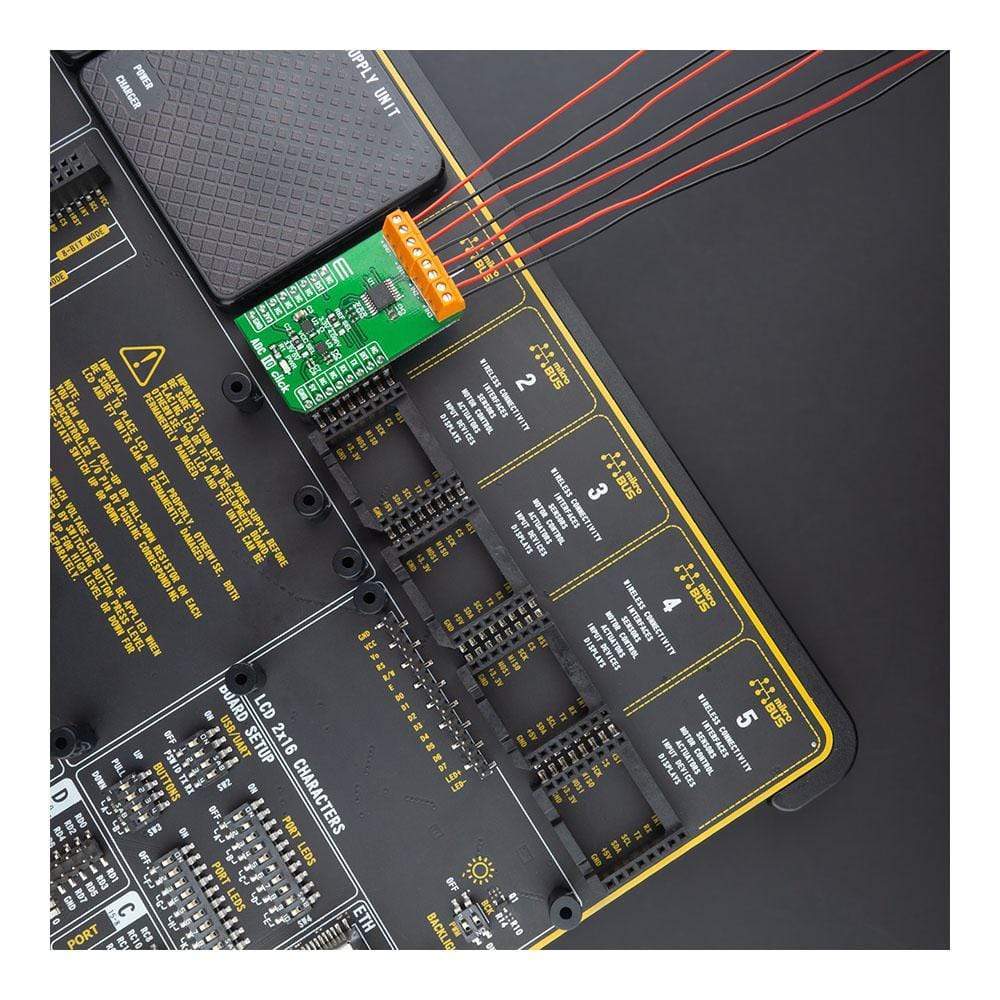
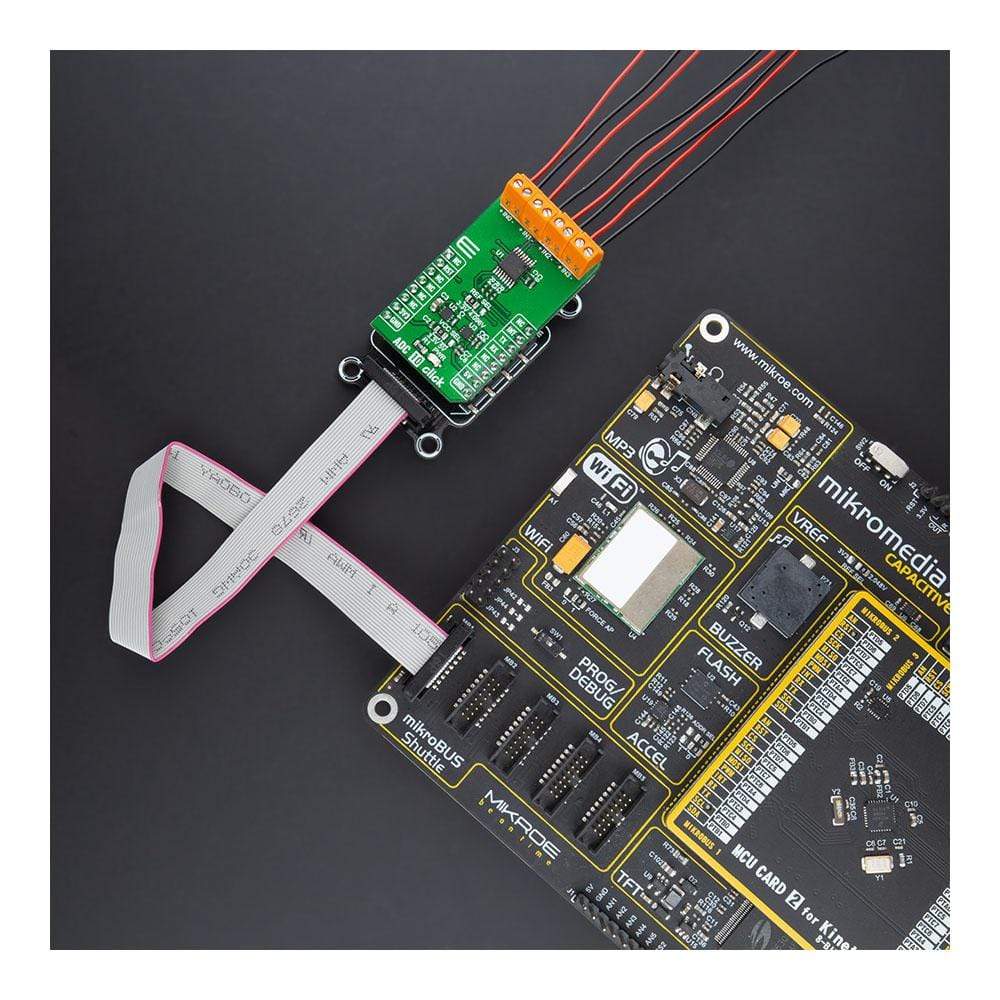
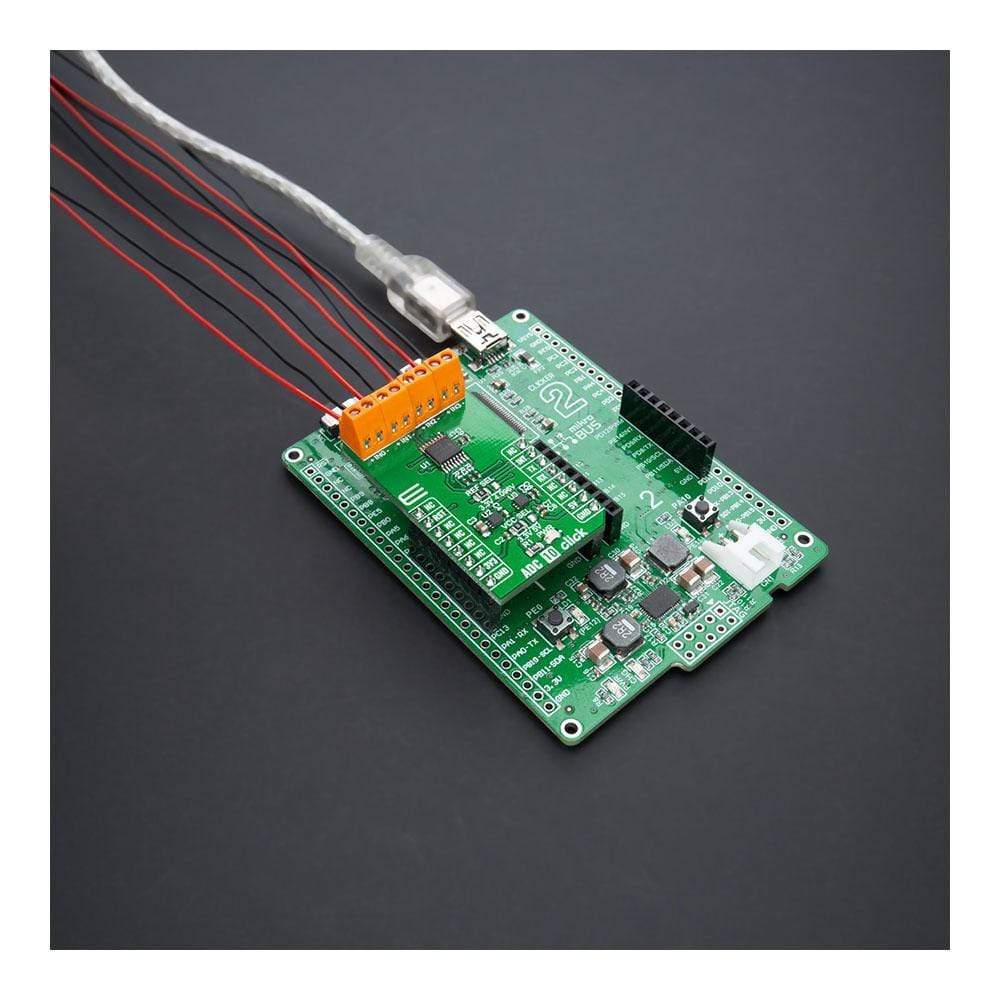
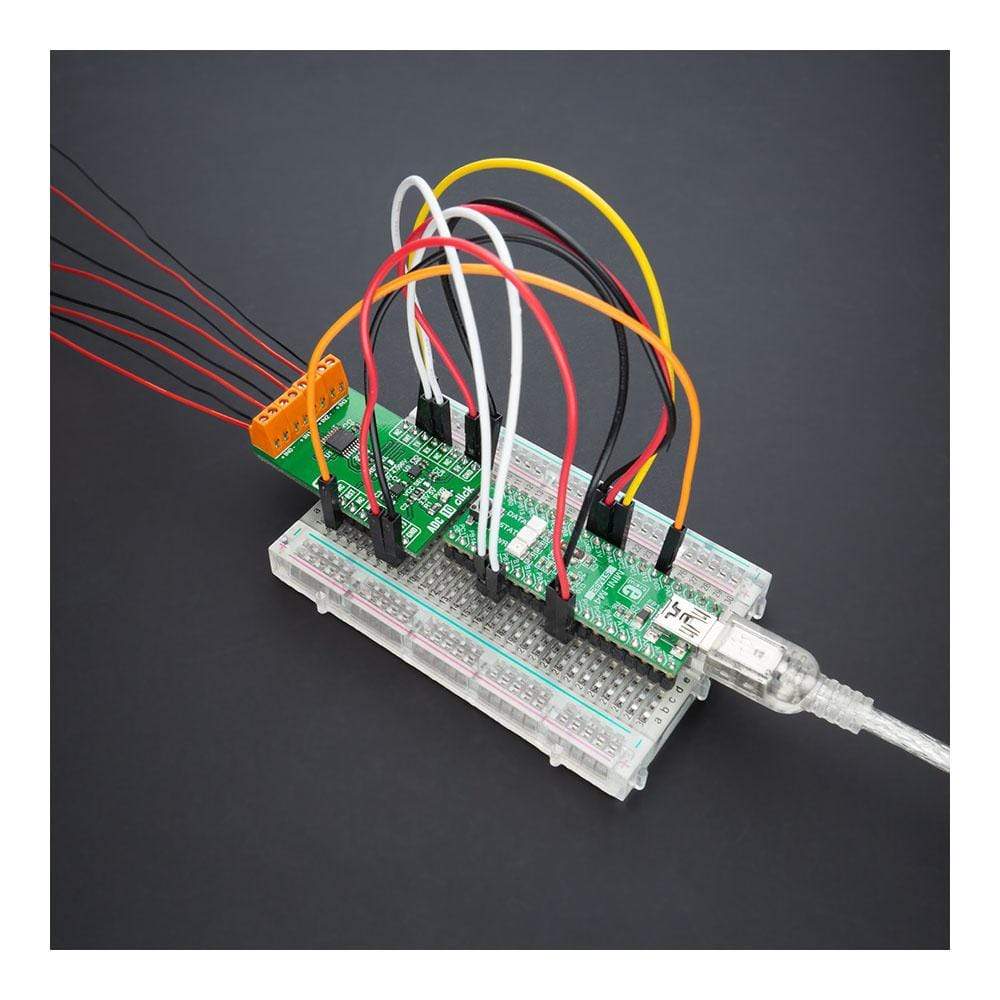
Key Features
Overview
Looking for a high-performance data converter? Look no further than the ADC 10 Click Board™! This compact add-on board features the ADS122U04, a 24-bit precision ΔΣ analogue-to-digital converter with UART compatible interface from Texas Instruments. With its flexible input multiplexer, a programmable gain amplifier, programmable excitation current sources, voltage reference, oscillator, and temperature sensor, the ADS122U04 is capable of conversions at data rates of up to 2000 samples-per-second with single-cycle settling. It's perfect for measuring small sensor signals such as RTDs, thermocouples, thermistors, and resistive bridge sensors.
The ADC 10 Click Board™ is easy to use, thanks to its mikroSDK-compliant library and fully tested design. It's ready to be used on any system equipped with a mikroBUS™ socket, making it a convenient and reliable choice for your data conversion needs. Don't miss out on this opportunity to improve your accuracy and performance - get your ADC 10 Click Board™ today!
Downloads
Sie suchen einen leistungsstarken Datenkonverter? Dann sind Sie mit dem ADC 10 Click Board™ genau richtig! Diese kompakte Zusatzplatine verfügt über den ADS122U04, einen 24-Bit-Präzisions-ΔΣ-Analog-Digital-Konverter mit UART-kompatibler Schnittstelle von Texas Instruments. Mit seinem flexiblen Eingangsmultiplexer, einem programmierbaren Verstärkungsverstärker, programmierbaren Erregerstromquellen, einer Spannungsreferenz, einem Oszillator und einem Temperatursensor ist der ADS122U04 in der Lage, Konvertierungen mit Datenraten von bis zu 2000 Abtastungen pro Sekunde mit Einschwingzyklus durchzuführen. Er eignet sich perfekt zum Messen kleiner Sensorsignale wie RTDs, Thermoelemente, Thermistoren und Widerstandsbrückensensoren.
Das ADC 10 Click Board™ ist dank seiner mikroSDK-kompatiblen Bibliothek und seines vollständig getesteten Designs einfach zu verwenden. Es kann auf jedem System verwendet werden, das mit einer mikroBUS™-Buchse ausgestattet ist, und ist somit eine praktische und zuverlässige Wahl für Ihre Datenkonvertierungsanforderungen. Verpassen Sie nicht diese Gelegenheit, Ihre Genauigkeit und Leistung zu verbessern – holen Sie sich noch heute Ihr ADC 10 Click Board™ !
| General Information | |
|---|---|
Part Number (SKU) |
MIKROE-4488
|
Manufacturer |
|
| Physical and Mechanical | |
Weight |
0.02 kg
|
| Other | |
Country of Origin |
|
HS Code Customs Tariff code
|
|
EAN |
8606027381713
|
Warranty |
|
Frequently Asked Questions
Have a Question?
Be the first to ask a question about this.

